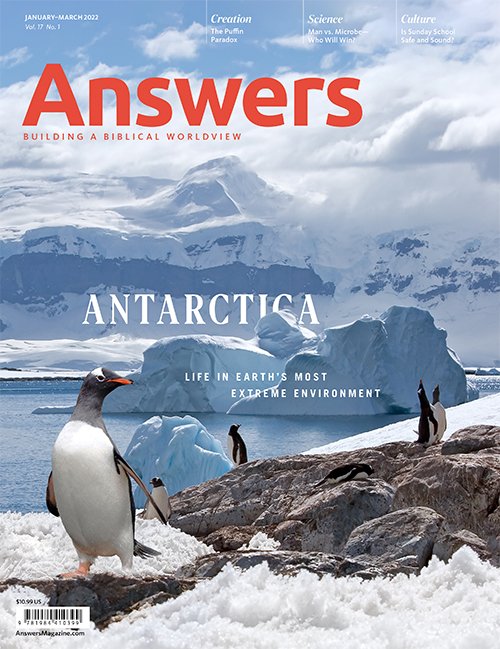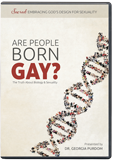Man vs. Microbe
Microbiology
Antibiotics allow us to combat bacteria, but bacteria are fighting back.
We are at war. No, not the culture war or the gender war or the many other types of war that exist in our so-called “post-truth” society. We are at war with microbes. The COVID-19 pandemic has shown us that this war can be long and confusing, especially when the enemy changes tactics, such as with COVID-19 variants.
The war between microbes and humans began as a result of sin. We know the world that God originally created was “very good” (Genesis 1:31), but Adam’s sin resulted in God’s punishment by death, disease, and suffering (Genesis 3:14–19). While microbes are still mostly beneficial in their relationships with the environment and man, some now cause disease. And among the deadliest microbes are bacteria.
In the 1940s, commercial use of antibiotics gave us a way to attack bacteria—but these microscopic menaces have fought back, strengthening their offensive each time. For almost 70 years we have waged war against antibiotic-resistant bacteria. Increasingly, news headlines warn of MRSA (methicillin-resistant Staphylococcus aureus), VRE (vancomycin-resistant Enterococci), MDR-TB (multi-drug resistant Mycobacterium tuberculosis), and CRE (carbapenem-resistant Enterobacteriaceae), with the list growing longer and more threatening every day.
Many scientists now claim we have entered the “post-antibiotic era.” One report from the UK estimated that 10 million people will die per year by 2050 from antibiotic resistant infections if effective treatments are not discovered.1 Imagine chemotherapy for cancer patients or a routine outpatient surgery, like an appendectomy or wisdom teeth removal, being too dangerous because we have no antibiotics to treat infection.
Evolutionists attribute this war to evolution and even appeal to evolution for solutions. But creationists have a different perspective on these constantly adapting bacteria. As we seek to lessen the effects of the curse and help our fellow man, Christians need to understand the cause of this crisis and pray for wisdom and creativity as scientists search for solutions.
No Evolution Here
God designed microbes to change and adapt for survival in a fallen world.
God designed microbes to change and adapt for survival in a fallen world. Under stress, some of the bacteria’s population will exhibit an increased mutation rate in their DNA for the chance of generating a variation that will enable them to more likely survive in an environment. To help them adapt, some bacteria get genetic information from other bacteria through a process called horizontal gene transfer (HGT). These changes help the bacteria survive—but they can also have deadly consequences for humans.
Evolutionists erroneously claim that these changes in bacteria are an example of evolution in action. But evolution always requires an upward net gain. For example, new structures and functions must be gained for a single-celled organism to evolve into something else. Instead, just the opposite happens. For example, one type of bacteria that causes ulcers possesses a protein that breaks down certain nutrients, but the same protein also interacts with and converts an antibiotic to a poison, killing the bacteria. Sometimes mutations occur in the DNA that encodes that protein. The protein changes so that it doesn’t interact with the antibiotic, but it also can’t break down the nutrients anymore. Though something is gained, something is also lost, which means no net gain.
Bacterial populations typically have thousands to millions of individuals that reproduce asexually. Though many of them die from the trial-and-error process, the vast number ensures that the population will continue. In addition, the bacteria remain bacteria. They are not gaining novel structures and functions that eventually result in a microbe evolving into a man.
Who’s Winning?
We take for granted that we can go to the doctor’s office and get a prescription for an antibiotic. For thousands of years, infections, now easily treatable, killed millions of people.
Though antibiotics weren’t used commercially until the 1940s, Alexander Fleming discovered the first antibiotic, penicillin, in 1928. Antibiotics are natural products that bacteria and fungi produce. They use antibiotics to wage war against microbial competitors for limited nutrients in their environment. Many modern antibiotics are modified versions of these natural forms. In essence, scientists harnessed the weapons that microbes use against each other to kill human microbial invaders. According to some estimates, antibiotics save over 200,000 lives annually in the US and add 5–10 years to life expectancy.2
Antibiotics are a tremendous weapon, but much like the Borg of Star Trek fame, bacteria have adapted quickly, and our weapons are no longer as effective. Bacteria become resistant through four main tactics: modifying the antibiotic target site (the protein that the antibiotic interacts with), modifying or destroying the antibiotic, kicking the antibiotic out of the bacterial cell, or reducing the antibiotic’s ability to get into the bacterial cell.
All this change captures evolutionists’ attention. But again, this is not an example of evolution since the bacteria are modifying something that they already possess to fight against the antibiotic. They are not gaining the novel structures or functions that evolution requires, and the changes usually cause degeneration.
As early as the mid-1950s, penicillin-resistant strains of staph started popping up. Today the list of antibiotic-resistant bacteria continues to grow. Several factors contribute to the increase in antibiotic-resistant bacteria, such as physicians over-prescribing antibiotics, people not completing antibiotic regimes, and overuse of antibiotics in animal feed. In addition, only a couple of new antibiotics have been developed in the past 30 years. Antibiotic production is slow and costly. Development and approval for a new antibiotic can take up to 15 years, and each new drug can cost one billion dollars.
New Weapons in the War
News and journal reports can be bleak, but humans were created with the ingenuity to have dominion even over creation under a microscope. With our God-given creativity, humans are finding new ways to fend off bacterial foes.
Fecal Transplants
Feces from healthy people are screened for disease and transplanted to sick people by colonoscopy. This procedure restores healthy gut bacteria. It may sound really gross, but fecal transplants have a 90% success rate at combatting one of the most challenging bacterial infections, Clostridium difficile (an appropriate name for such a difficult bacteria!). C. diff does not have resistance to antibiotics, but it usually causes problems when a person takes antibiotics that kill off many gut bacteria. The good gut bacteria die and can’t keep the bad gut bacteria like C. diff in check.
Antibiotic Resistance Breakers
Breakers are molecules that combine with antibiotics to “break” the resistance of the bacteria, allowing the antibiotic to be effective again. Combinations of existing drugs (such as blood pressure medicine) and even molecules found in food (such as spices and more recently in vanillin, the main chemical compound in the vanilla bean) are being tested with antibiotics. One study found over 1,200 combinations that are synergistic in their ability to kill bacteria.
Phage Therapy
Bacteriophages are a class of viruses that uniquely infect bacteria. The phage enters the bacteria, makes copies of itself, and then lyses the bacteria (breaks the cells apart), releasing its progeny to infect more bacteria. Sounds like a scene out of a horror movie!
Phages have many advantages over antibiotics including species-specificity, the ability to target specific bacteria rather than bacteria in general. Phages also have the ability to kill antibiotic-resistant bacteria and to digest biofilms, a complex grouping of bacteria that are often impenetrable to antibiotics.
Discovering Unique Targets
Bacteria are classified as prokaryotes while nearly every other living thing is a eukaryote. The main difference between the two classes of organisms is that, unlike in eukaryotes, DNA in prokaryote (bacterial) cells is not contained in a nucleus. Other distinctions appear in the composition of the cell membrane, metabolic pathways, and ribosomes (factories for making proteins).
Good antibiotics target molecules that are unique to prokaryotes. Advances in molecular biology allow scientists to discover ways to target differences more pointedly in the synthesis of ribosomes and fatty acid metabolism (breakdown of fats). The latter is especially important for developing antibiotics that kill only the disease-causing bacteria. In other words, these advances allow antibiotics to be snipers, taking out only select enemies.
The Ultimate Victor
Who will win this war between man and microbe? Some people resign to a fatalistic outlook. In an article discussing bacteria resistance to colistin, one of the last successful antibiotics, a Reddit user opined,
You can run, but you can’t hide. . . . In the end when they study why we all died it won’t be because of nuclear wars or global warming. It will be from something like these, the bugs that finally got us all.3
According to God’s Word, we know it won’t be bacteria that get us in the end. Jesus will return as the righteous judge and set up a new heaven and earth, ending the curse and the sickness that comes from it (Revelation 21:4). Until then, we will continue drawing battle lines against hostile bacteria and fighting to find new ways to mitigate the effects of the curse—man vs. microbe until the end.
Answers Magazine
January–March 2022
God created the world to be inhabited, right down to the frozen continent at the bottom of the globe.
Browse Issue SubscribeFootnotes
- Review on Antimicrobial Resistance, Antimicrobial Resistance: Tackling a crisis for the health and wealth of nations, December 2014, https://amr-review.org/sites/default/files/AMR%20Review%20Paper%20-%20Tackling%20a%20crisis%20for%20the%20health%20and%20wealth%20of%20nations_1.pdf.
- Gottfried, Joseph. “History Repeating? Avoiding a Return to the Pre-Antibiotic Age,” 2005. https://dash.harvard.edu/bitstream/handle/1/8889467/Gottfried05.html.
- Sarchet, Penny. “No Place to Hide.” New Scientist 230, no. 3071 (April 30, 2016): 16–17.
Recommended Resources

Answers in Genesis is an apologetics ministry, dedicated to helping Christians defend their faith and proclaim the good news of Jesus Christ.
- Customer Service 800.778.3390
- © 2024 Answers in Genesis






